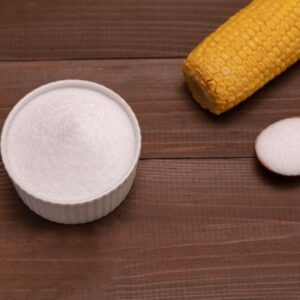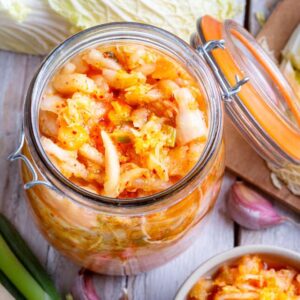
DOUSE the Inflammation Fire AND Fight High Blood Sugar!
Dear Living Well Daily Reader,
I don’t have to tell you that out-of-control inflammation is NOT your friend.
What starts as a normal, healthy process to fend off dangerous invaders in your body can quickly fan into the flames of chronic inflammation.
The problem is almost no one has short-term inflammation. Instead, most folks in our modern society have almost permanent low-level inflammation.
Then, before you know it, you’re on the road to disease… including diabetes.
But there is something you can do.
This simple trick DOUSES the fires of inflammation AND fights blood sugar too!
Believe it or not, controlling inflammation could be as easy as trying intermittent fasting.
Before you run off this page thinking you can never fast, let me tell you that it’s not as hard as the mainstream would have you think…
And the benefits are downright amazing.
Recently, scientists from Intermountain Healthcare Heart Institute performed a study looking into the benefits of intermittent fasting.
In the study, 67 patients with high LDL cholesterol (the “bad” one) and diabetes were divided into two groups. For four weeks, one group was told to fast two days a week, drinking only water. Then, after 22 weeks had passed, they were told to fast one day a week (still only drinking water).
And at the end of the study, the folks who’d done regular fasting had improved insulin resistance, and higher levels of a substance called galectin-3.
In other studies, galectin-3 has been linked to calming inflammation in your body. If you raise levels of galectin-3 in your body, inflammation naturally drops.
Now, if you’re struggling with the idea of fasting, you’re not alone. Many people have problems thinking about going without food.
One way to make it easier is to eat dinner at around 5 or 6 o’clock, then go to sleep and not eat again until the dinnertime the next day. This often works better than going a whole day without eating.
You can try what the people in this study did, or you can try something much easier: compressing your eating schedule.
All you do is set aside a certain part of the day when you eat, and a certain part where you don’t. Most people eat between 14 and 16 hours a day (or whenever they are awake).
But if you can drop that to 10 hours a day, you’re still intermittent fasting.
You may experience some temporary side effects such as headaches, irritability, and upset stomach, or other digestive problems. Other common symptoms are bad breath or a bad taste in your mouth, and acne or other skin problems. The good news is, these types of symptoms usually occur on the first day or two and then become less intense as time goes on.
P.S. A new study shows that intermittent fasting could also help slow this type of cancer. Find out more right here.
SOURCE:
Anderer, John. “Intermittent fasting reduces inflammation, helps the body like a diabetes medication.” 11/16/21. Study Finds. https://www.studyfinds.org/intermittent-fasting-inflammation/
Written By Dr. Scott Olson, ND
Nearly 25 years ago, failed mainstream medical treatments left Dr. Olson in constant pain – and his health in ruins. And that’s when he did something REVOLUTIONARY. He began his career in medicine – and dedicated his life to uncovering the true, underlying causes of disease.
Through his innovative medical practices in Tennessee and Colorado, Dr. Olson has helped cure countless seniors from across America of arthritis… heart disease… diabetes… and even cancer. All without risky prescription drugs or painful surgeries.
View More Free Articles
A New Reason to Ditch Processed Junk
If you’ve ever walked the inside aisles of your local grocery store and thought, “This is all just junk,” your instincts were spot on. A new study published in the journal Thorax just added another red flag to the list of dangers linked to ultra-processed food—a 41 percent higher risk of lung cancer. That’s right....
When Being Winded on Stairs Is Serious (And When It Isn’t)
I had an athlete visit me recently because he experienced shortness of breath while climbing stairs. He is in great shape, so he was worried about what it might mean. “Doc,” he said, “I run five miles three times a week. Why am I huffing and puffing after two flights of stairs?” His concern is...
Study EXPOSES Hidden Danger Lurking in Your Car
We think of our homes and cars as safe havens. But according to a startling new study, they may be flooding your lungs with microscopic plastic particles—every single day. Researchers in France recently found that adults inhale an average of 68,000 microplastic particles daily from indoor air alone. To put that in perspective, that’s about...
Mailbag: Is Modern Food Making You Snore?
“What can cause snoring, and is there a way to correct this issue?” —Seeking Silence Hi Seeking, Snoring happens when the soft tissues in your throat relax and vibrate as air passes through during sleep. While several factors can cause snoring—from sleep position to nasal congestion—I want to share one trigger that might surprise you....
Simple Food Swap SLASHES Dementia Risk 28%
Let’s be honest… who would jump at the chance to cut their dementia risk by 28 percent. And no, you don’t need to run marathons, survive on broccoli, or learn to play the zither (whatever that is) to make it happen. All it takes is one easy swap—something that’s probably already in your refrigerator. Researchers...
This SMART Floss Exposes Hidden Health Danger
Scientists have created dental floss that doesn’t just clean between your teeth—it also tracks your stress while you’re flossing. Now, I know what you’re thinking… “Great—now even flossing is going to stress me out by telling me how stressed I am.” But this fascinating new tool from Tufts University could be a game-changer for understanding...
Is This "Safe" Sweetener Damaging Your Brain?
The headlines are alarming… “Popular Sugar Substitute Linked to Brain Cell Damage” and “Erythritol Could Damage Critical Brain Barrier” are just two of the dozens I’ve spotted recently. But before you toss every sugar-free product in your pantry, let’s take a closer look at what this study actually shows—and what it doesn’t. The latest research...
This Summer Threat Could SPIKE Your Blood Sugar
Picture this… It’s another scorching hot summer day. You crank up the air conditioning while watching the weather forecast, which predicts yet another “record-breaking” heat wave. It’s starting to feel like just another miserably uncomfortable summer. But what you might not realize is that—if you have diabetes—those rising temps could do far more damage to...
Move Over Yogurt—5 Foods That Pack MORE Probiotics
Let’s talk about your gut. The microbiome is the collection of trillions of bacteria and other tiny organisms that live in and on your body—especially in your gut—and help keep you healthy. I’ve written often about how vital it is to maintain a healthy microbiome. And you might have dutifully added yogurt to your shopping...
Is Your Heart Older Than YOU?
Maybe you feel young for your age. Good energy, decent sleep, eating your veggies. But what if I told you your heart might be a decade older than the rest of you? That’s exactly what researchers at Northwestern University found in a new study published in JAMA Cardiology. The average American woman’s heart is about...









